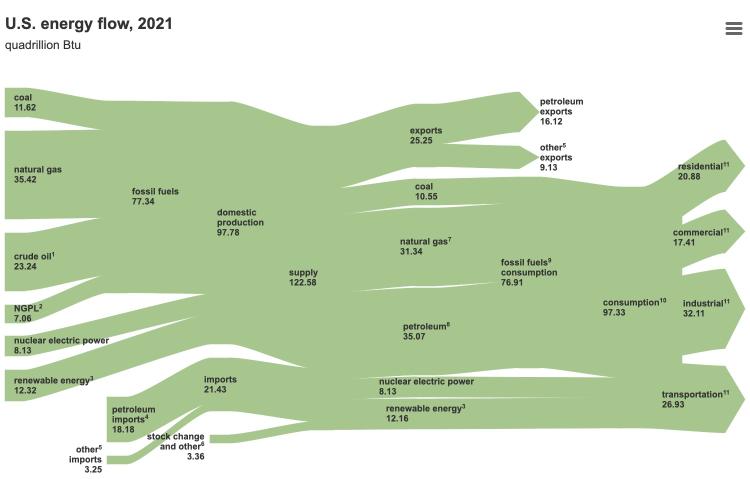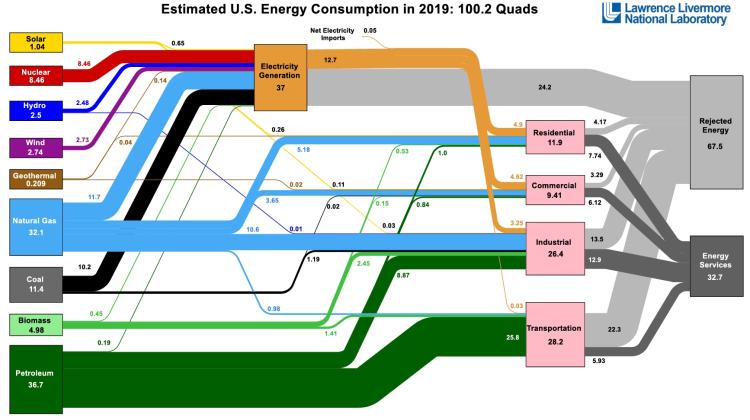Sources and Sinks (Or Supply and Demand)
Definitions:
- Source - a place, person, or thing from which something comes or can be obtained.
- Sink - a fixed basin.
- Supply - a stock of a resource from which a person or place can be provided with the necessary amount of that resource.
- Demand - the desire of purchasers, consumers, clients, employers, etc., for a particular commodity, service, or other item.
Please see the figures below to visualize the various sources and sinks of energy in the US economy. Both of these figures show the original source of energy, whether it be direct radiation from the sun, from combustion of natural gas, nuclear fission, or some other source. From there, we see how the sources "move" through the various conversion systems to provide energy services to the various sectors like transportation or residences (sinks):


One of the most interesting sinks in the US economy is rejected energy. Rejected energy is that which does not provide useful work. Rejection is usually in the form of heat, but also in the form of transportation losses. What does this imply for the potential to decarbonize?
We discuss sources and sinks here to illustrate the level of energy consumption across the US and also how complex the overall market is.
We will discuss supply and demand in greater detail toward the end of the course. Understanding how these forces interact in the present as well as how they will interact in the future will help inform all of the decisions we make in our professions.
